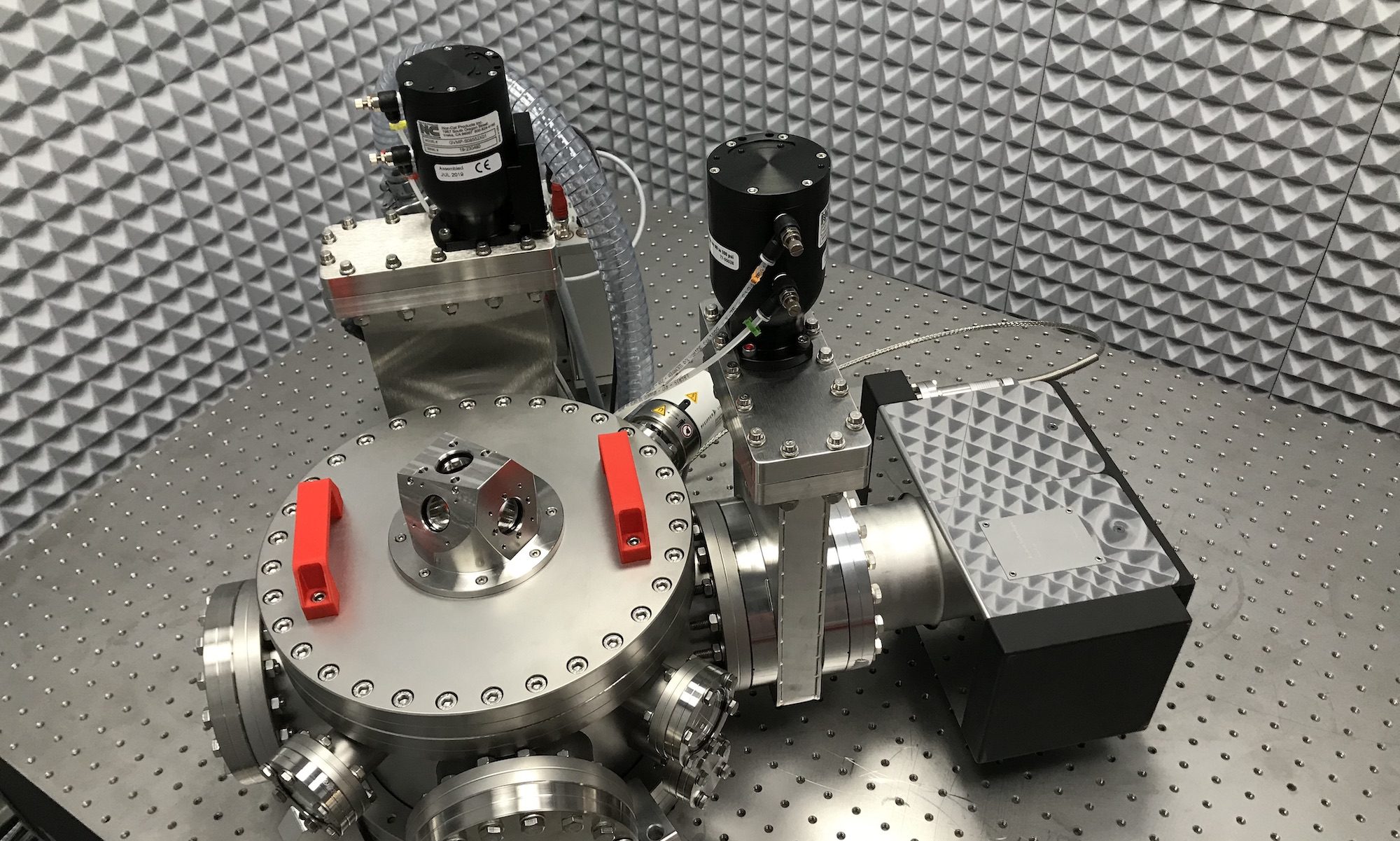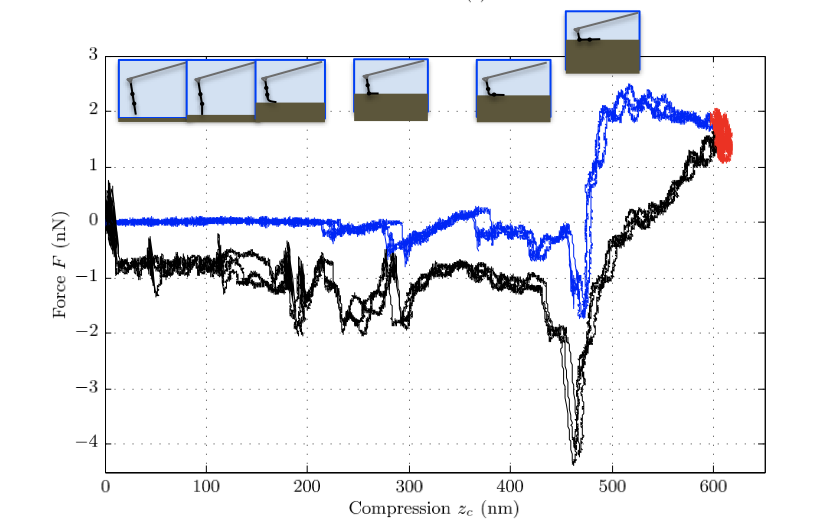Tianjun Li, PhD Thesis, École Normale Supérieure de Lyon & East China Normal University – Shanghai (2013)
hal: tel-00907812
In this thesis, we test some interactions involving surfaces processes at the nanometer scale. The experiments are conducted with a highly sensitive interferometric Atomic Force Microscope (AFM), achieving a resolution down to 10-28 m2/Hz for the measurement of deflection. Combined with original thermal noise analysis, this tool allows quantitative characterization of the mechanical response of micrometer and nanometer sized systems, such as microcantilevers or carbon nanotubes, on a large frequency range.The first part of my work deals with the viscoelasticity of the coating of AFM cantilevers. Evidenced by a 1/f thermal noise at low frequency, this phenomenon is present when a cantilever is coated with a metallic layer (gold, aluminium, platinium, etc…). Using the fluctuation dissipation theorem and Kramers Kronig relations, we extract the frequency dependance of this viscoelastic damping on a wide range of frequency (1 Hz to 20 kHz). We find a generic power law dependence in frequency for this dissipation process, with a small negative coefficient that depends on materials. The amplitude of this phenomenon is shown to be linear in the coating thickness, demonstrating that the damping mechanism takes its roots in the bulk of the metallic layer.The second part of my work tackles new experiments on the interaction of carbon nanotubes with flat surfaces. Using our AFM, we perform a true mechanical response measurement of the rigidity and dissipation of the contact between the nanotube and the surface, in a peeling configuration (the nanotube is partially absorbed to the substrate). The results of this protocol are in line with the dynamic stiffness deduced from the thermal noise analysis, showing an unexpected power law dependence in frequency for the contact stiffness. We suggest some possible physical origins to explain this behavior, such as an amorphous carbon layer around the nanotube.

